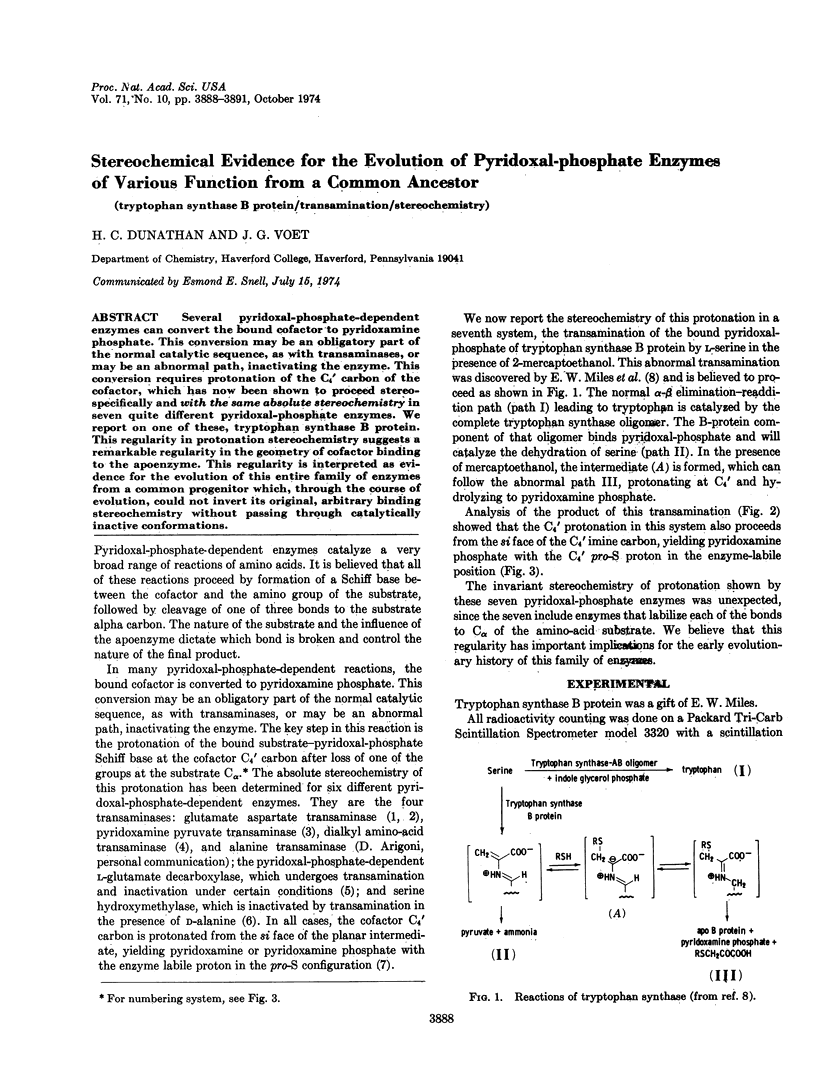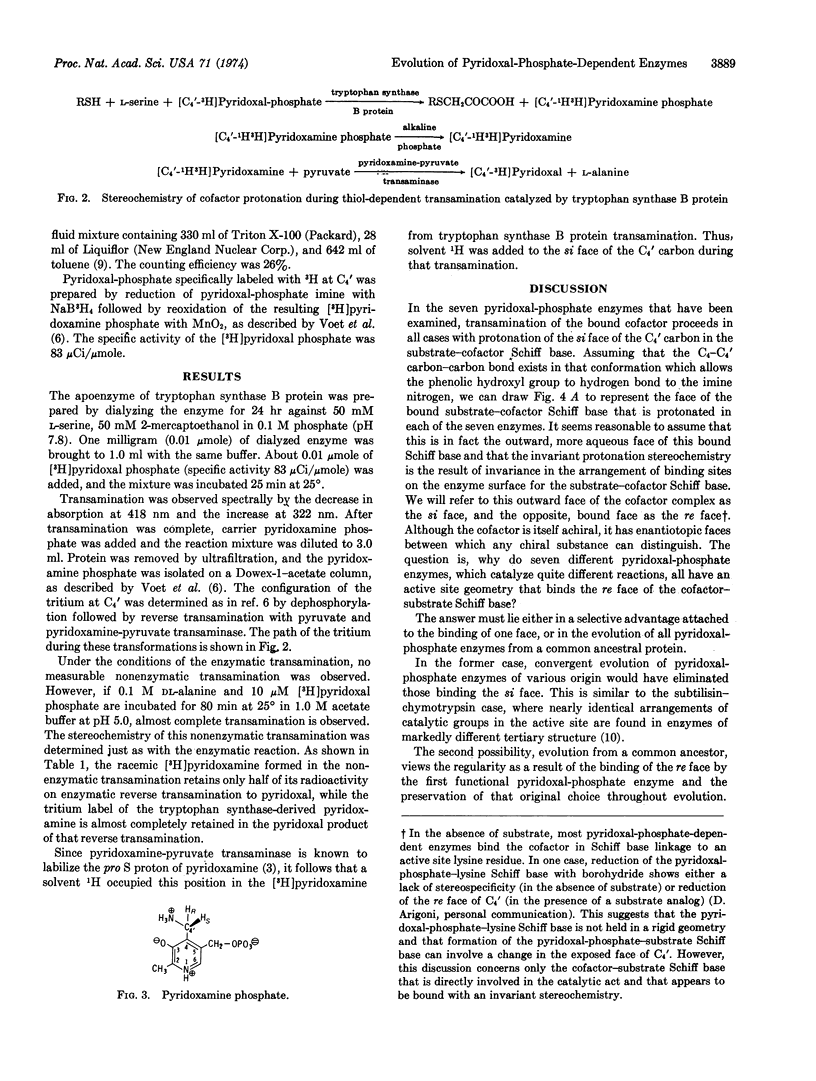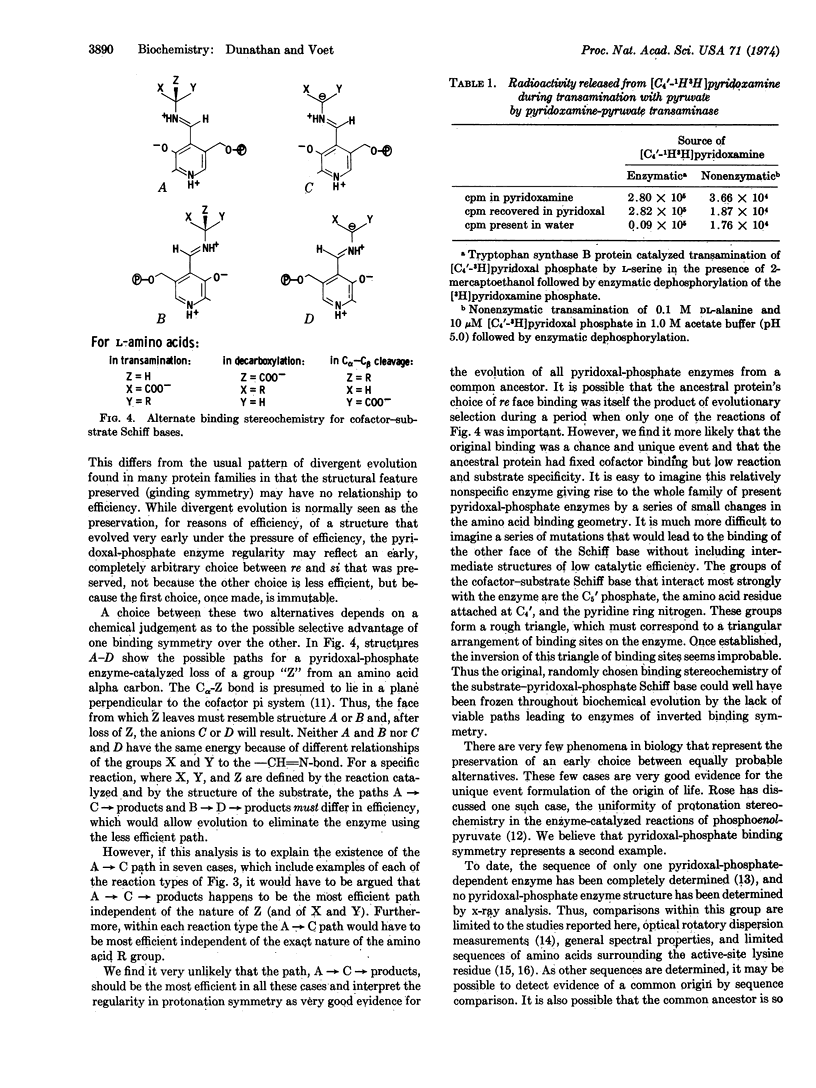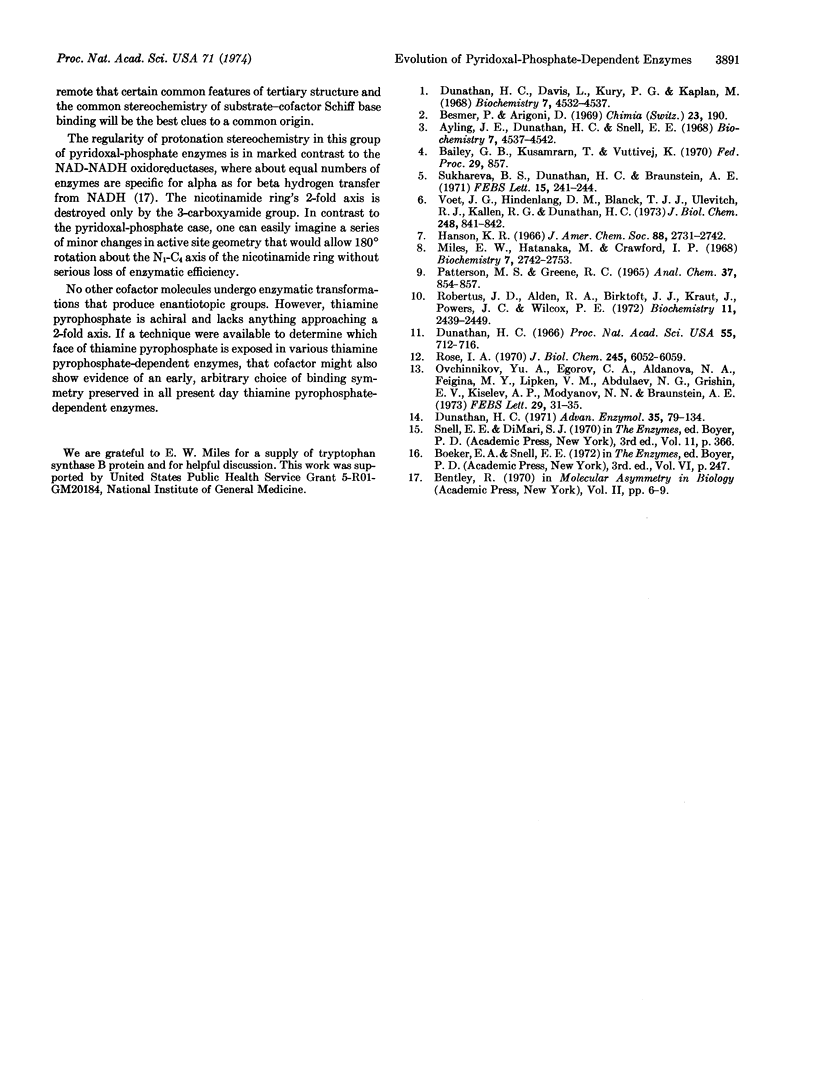Abstract
Several pyridoxal-phosphate-dependent enzymes can convert the bound cofactor to pyridoxamine phosphate. This conversion may be an obligatory part of the normal catalytic sequence, as with transaminases, or may be an abnormal path, inactivating the enzyme. This conversion requires protonation of the C4′ carbon of the cofactor, which has now been shown to proceed stereospecifically and with the same absolute stereochemistry in seven quite different pyridoxal-phosphate enzymes. We report on one of these, tryptophan synthase B protein. This regularity in protonation stereochemistry suggests a remarkable regularity in the geometry of cofactor binding to the apoenzyme. This regularity is interpreted as evidence for the evolution of this entire family of enzymes from a common progenitor which, through the course of evolution, could not invert its original, arbitrary binding stereochemistry without passing through catalytically inactive conformations.
Keywords: tryptophan synthase B protein, transamination, stereochemistry
Full text
PDF



Selected References
These references are in PubMed. This may not be the complete list of references from this article.
- Ayling J. E., Dunathan H. C., Snell E. E. Stereochemistry of transamination catalyzed by pyridoxamine--pyruvate transaminase. Biochemistry. 1968 Dec;7(12):4537–4542. doi: 10.1021/bi00852a050. [DOI] [PubMed] [Google Scholar]
- Dunathan H. C. Conformation and reaction specificity in pyridoxal phosphate enzymes. Proc Natl Acad Sci U S A. 1966 Apr;55(4):712–716. doi: 10.1073/pnas.55.4.712. [DOI] [PMC free article] [PubMed] [Google Scholar]
- Dunathan H. C., Davis L., Kury P. G., Kaplan M. The stereochemistry of enzymatic transamination. Biochemistry. 1968 Dec;7(12):4532–4537. doi: 10.1021/bi00852a049. [DOI] [PubMed] [Google Scholar]
- Dunathan H. C. Stereochemical aspects of pyridoxal phosphate catalysis. Adv Enzymol Relat Areas Mol Biol. 1971;35:79–134. doi: 10.1002/9780470122808.ch3. [DOI] [PubMed] [Google Scholar]
- Miles E. W., Hatanaka M., Crawford I. P. A new thiol-dependent transamination reaction catalyzed by the B protein of Escherichia coli tryptophan synthetase. Biochemistry. 1968 Aug;7(8):2742–2753. doi: 10.1021/bi00848a008. [DOI] [PubMed] [Google Scholar]
- PATTERSON M. S., GREENE R. C. MEASUREMENT OF LOW ENERGY BETA-EMITTERS IN AQUEOUS SOLUTION BY LIQUID SCINTILLATION COUNTING OF EMULSIONS. Anal Chem. 1965 Jun;37:854–857. doi: 10.1021/ac60226a017. [DOI] [PubMed] [Google Scholar]
- Robertus J. D., Alden R. A., Birktoft J. J., Kraut J., Powers J. C., Wilcox P. E. An x-ray crystallographic study of the binding of peptide chloromethyl ketone inhibitors to subtilisin BPN'. Biochemistry. 1972 Jun 20;11(13):2439–2449. doi: 10.1021/bi00763a009. [DOI] [PubMed] [Google Scholar]
- Rose I. A. Stereochemistry of pyruvate kinase, pyruvate carboxylase, and malate enzyme reactions. J Biol Chem. 1970 Nov 25;245(22):6052–6056. [PubMed] [Google Scholar]
- Sukhareva B. S., Dunathan H. C., Braunstein A. E. The stereochemistry of the abortive transmination shown by glutamate decarboxylase. FEBS Lett. 1971 Jun 24;15(3):241–244. doi: 10.1016/0014-5793(71)80321-6. [DOI] [PubMed] [Google Scholar]
- Voet J. G., Hindenlang D. M., Blanck T. J., Ulevitch R. J., Kallen R. G., Dunathan H. C. The stereochemistry of pyridoxal phosphate enzymes. The absolute stereochemistry of cofactor C' 4 protonation in the transamination of holoserine hydroxymethylase by D-alanine. J Biol Chem. 1973 Feb 10;248(3):841–842. [PubMed] [Google Scholar]


